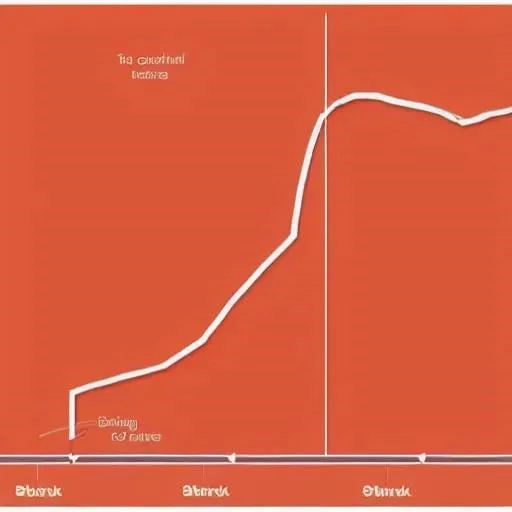In the vibrant tapestry of today’s economy‚ small businesses are not merely cogs in a machine; they are the innovative engines driving growth‚ creating jobs‚ and shaping communities. From the bustling main streets to the quiet corners of the digital realm‚ entrepreneurial spirit thrives‚ fueled by ambition and groundbreaking ideas. Yet‚ even the most brilliant ventures often encounter a pivotal hurdle: securing the necessary capital to ignite expansion or navigate unforeseen challenges. This financial quest‚ while sometimes daunting‚ is profoundly surmountable for those armed with insight and a strategic approach.
The journey to obtaining a small business loan can feel like traversing a complex labyrinth‚ replete with stringent requirements‚ intricate paperwork‚ and a bewildering array of financing options. However‚ dismissing these perceived obstacles as insurmountable would be a grave miscalculation. By meticulously understanding the landscape and preparing diligently‚ entrepreneurs can transform the loan application process from a potential roadblock into a powerful launchpad. This article will demystify the path to securing vital funding‚ offering a forward-looking perspective designed to empower your business for unprecedented success in a competitive market.
Essential Resources for Small Business Loan Applicants
Here’s a quick guide to key elements in the small business loan landscape‚ designed for easy reference:
| Category | Description | Key Examples/Details | Official Link for Reference |
|---|---|---|---|
| Loan Types | Diverse financial products tailored to specific business needs. |
| SBA.gov Funding Programs |
| Key Requirements | Crucial documentation and criteria lenders assess for eligibility. |
| SBA.gov Finance Your Business |
| Lender Types | Various institutions offering small business financing. |
| SBA Lender Match |
| Application Process Steps | A simplified overview of the typical application journey. |
| SBA.gov Start Your Business Guide |
The first‚ incredibly important step in this process is to precisely define why your business requires funding. Are you eyeing expansion into new markets‚ necessitating capital for additional inventory or a larger facility? Perhaps you’re looking to upgrade essential equipment‚ streamline operations‚ or simply bolster your cash flow to confidently navigate seasonal fluctuations. Clearly articulating your financial needs and their projected impact on your business’s trajectory is paramount‚ forming the bedrock of a compelling loan application.
Next‚ meticulously review the eligibility requirements associated with various loan types. Lenders‚ whether traditional banks or innovative online platforms‚ typically scrutinize several key factors. Your personal and business credit scores will undoubtedly be a primary consideration‚ serving as a robust indicator of your financial responsibility. A well-crafted business plan‚ demonstrating a clear vision‚ market analysis‚ and realistic financial projections‚ is equally crucial. Furthermore‚ be prepared to present comprehensive financial statements‚ including profit and loss statements‚ balance sheets‚ and cash flow projections‚ painted with a clear picture of your company’s fiscal health. “Understanding your financial narrative is like knowing your business’s heartbeat‚” remarks Valerie Morris‚ a Staff Personal Finance Editor‚ emphasizing the critical role of transparent financial reporting.
Navigating the diverse landscape of small business loans means understanding that not all funding is created equal. The Small Business Administration (SBA) often acts as a beacon for entrepreneurs‚ providing guidelines for loans and significantly reducing lender risk. SBA-backed loans‚ such as the widely popular 7(a) program or microloan initiatives‚ typically offer more favorable terms‚ lower down payments‚ and longer repayment periods‚ making them an incredibly attractive option for many. However‚ the application process for these can be more rigorous‚ demanding thorough preparation of all documentation. Alternatively‚ traditional term loans‚ lines of credit‚ and equipment loans offer direct financing tailored to specific needs‚ often with varying interest rates and repayment structures. Online lenders‚ conversely‚ provide a remarkably streamlined application process‚ frequently delivering faster approvals‚ albeit sometimes with higher interest rates or shorter terms.
Preparing for the actual application is where diligence truly pays dividends. Gathering all important financial and legal paperwork ahead of time is a brilliant strategy‚ ensuring you are ready to share essential documents with potential lenders without delay. This proactive approach not only accelerates the process but also conveys a sense of professionalism and preparedness that lenders genuinely appreciate. Documents typically include business and personal tax returns‚ bank statements‚ legal business entity documents‚ and any existing business licenses or permits. By integrating insights from industry experts‚ one quickly learns that a well-organized application can significantly improve your chances of approval‚ transforming a potentially lengthy waiting period into a swift decision.
Choosing the right lender is as critical as preparing the application itself. While traditional banks offer established relationships and often competitive rates for qualified applicants‚ their approval processes can be notoriously lengthy‚ sometimes taking weeks to finalize. Online lenders‚ on the other hand‚ have revolutionized access to capital‚ offering quick applications and rapid funding‚ which is ideal when immediate resources are needed. The SBA’s Lender Match tool provides an invaluable service‚ connecting entrepreneurs with participating lenders who specialize in SBA-backed programs. This strategic selection of a lender‚ harmonizing your business’s needs with their offerings‚ is a pivotal decision shaping your financing future. As Lars Peterson‚ Senior Editor of Financial Products at Investopedia‚ wisely advises‚ “Researching and comparing lenders is not just an option‚ it’s a necessity for securing the best possible terms.”
Even with meticulous preparation‚ rejection for a small business loan can sometimes feel like an inevitable rite of passage for entrepreneurs. Historically‚ rejection rates with traditional banks have been as high as 73 percent. However‚ this statistic should not deter‚ but rather inform. The odds improve considerably with alternative lenders and by understanding the reasons for denial. Often‚ rejection stems from easily rectifiable issues‚ such as a low credit score‚ an incomplete business plan‚ or insufficient collateral. Viewed through an optimistic lens‚ each rejection offers an invaluable learning opportunity‚ providing clear indicators of areas needing improvement. Proactively addressing these weaknesses‚ perhaps by strengthening your credit‚ refining your business plan‚ or exploring different loan types‚ significantly enhances your prospects for future success.






